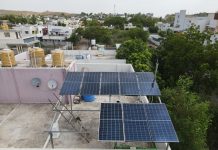When it comes to early childhood education, parents often find themselves standing at a crossroads, confused about the best educational setting for their little ones. The terms ‘playschool’ and ‘preschool’ are frequently used interchangeably, but they’re not quite the same. So, what are the key differences and similarities between play schools and preschools? Let’s delve into this crucial topic to provide some clarity for confused parents.
What is a Playschool?
A playschool is generally considered a more relaxed setting that focuses on the social and emotional development of children, typically between the ages of 18 months and 3 years. The curriculum is usually play-based, incorporating activities that enable children to explore, enjoy, and learn at their own pace. For example, a playschool in Marathahalli may employ play-based teaching methods, using toys, games, and hands-on activities to facilitate learning.
What is a Preschool?
Preschool, on the other hand, serves as a more structured preparation for formal education. Catering to children between the ages of 3 and 5, preschool programs often include a structured curriculum that incorporates academic learning and skill development. Let’s say a preschool in Bellandur offers math and literacy classes; these would typically be more structured compared to the play-based activities in a playschool.
Key Differences
Age Group: Playschools generally cater to younger children, usually between the ages of 18 months and 3 years, while preschools are designed for kids aged 3 to 5.
Curriculum: Playschools adopt a more relaxed, play-based curriculum focused on social and emotional development. Preschools usually follow a more structured curriculum, targeting not just emotional and social skills but also basic academic skills like numeracy and literacy.
Duration: Playschools often have shorter daily schedules to suit younger children’s attention spans, whereas preschools might offer longer sessions to prepare kids for the lengthier school day.
Readiness: Playschools aim to make children school-ready by focusing on socialization and emotional growth. Preschools, in contrast, focus on preparing kids academically for kindergarten.
Key Similarities
Early Childhood Education: Both playschools and preschools fall under the umbrella of early childhood education, setting the foundation for lifelong learning.
Holistic Development: Despite their differences, both types of institutions aim to offer a balanced development encompassing social, emotional, and cognitive growth.
Engagement: Both playschools and preschools prioritize engaging children in activities that foster learning and development, although the methods may vary.
Parental Involvement: Both settings often encourage or require parental involvement, recognizing that parents are a child’s first and most essential educators.
Choosing between a playschool and a preschool can be a tough decision for parents. Understanding the key differences and similarities can guide you in making the best choice for your child’s unique needs.
Whether you’re considering a playschool in Marathahalli or a preschool in Bellandur, the key is to visit various settings, observe the environment, and ask plenty of questions. This will help you find the educational setting that best suits your child’s developmental needs, preparing them for the exciting journey of lifelong learning.
And there you have it—a closer look at the critical differences and similarities between playschools and preschools, helping you make a more informed decision for your child’s early education.



























